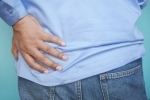Comprehensive Exercise Guide for Alleviating Back Pain During Pregnancy
Understanding Back Pain in Pregnancy - Eighty percent of women will experience back pain at some point during their pregnancies. The severity can range from mild discomfort after standing for long periods to debilitating pain that disrupts daily life. Although back pain during pregnancy can sometimes indicate a more serious condition, such as the onset of labor, it is usually the result of natural bodily changes.
























